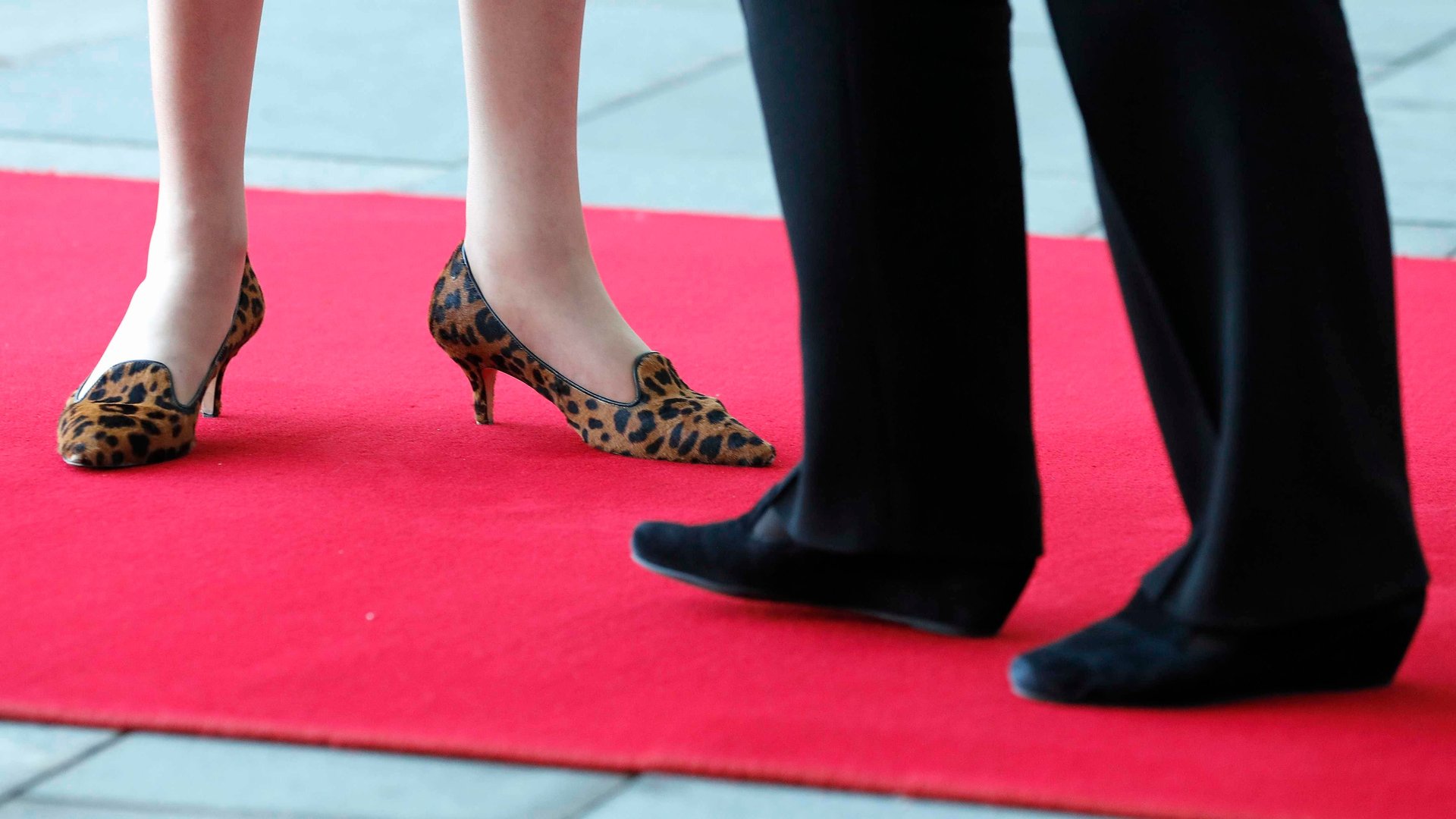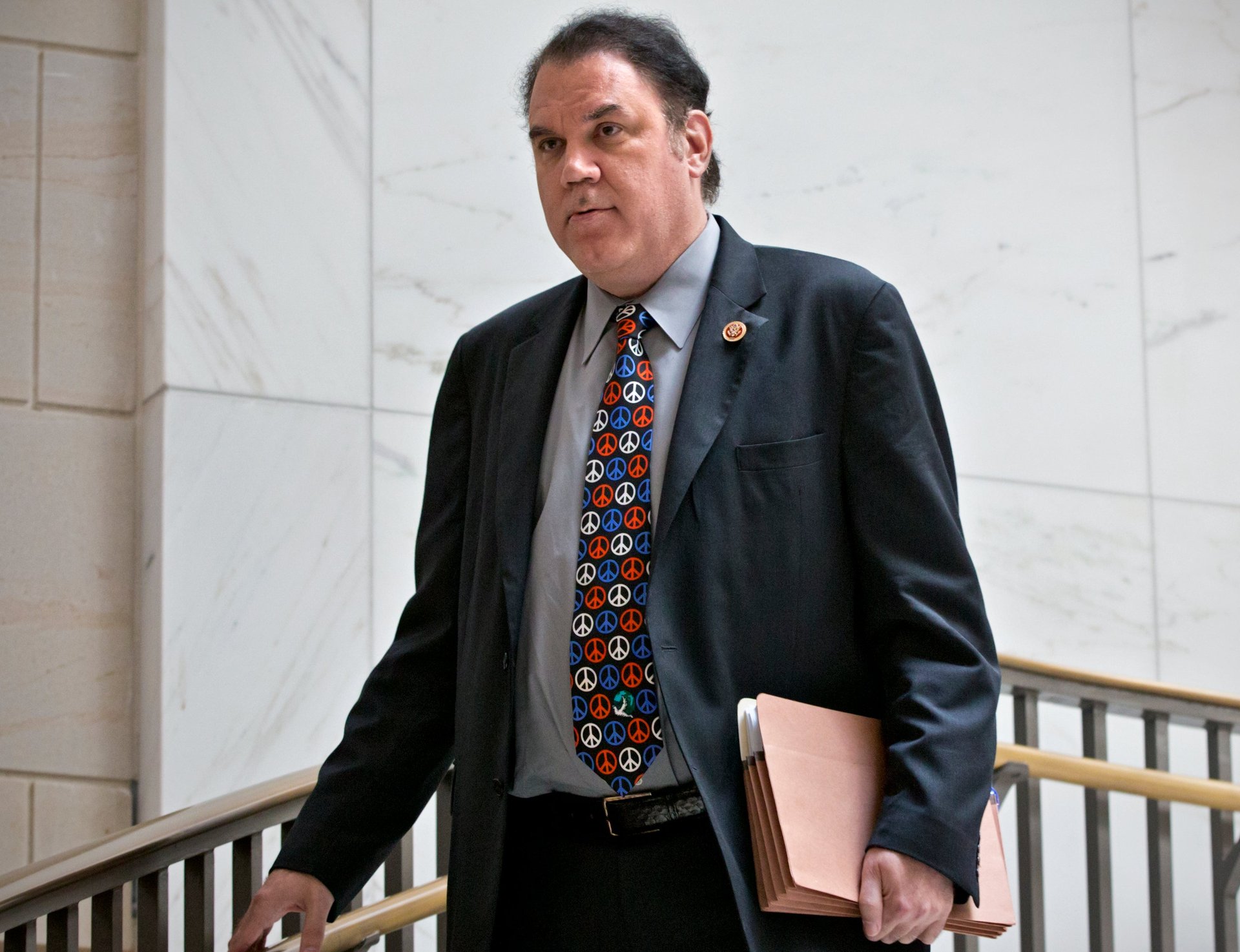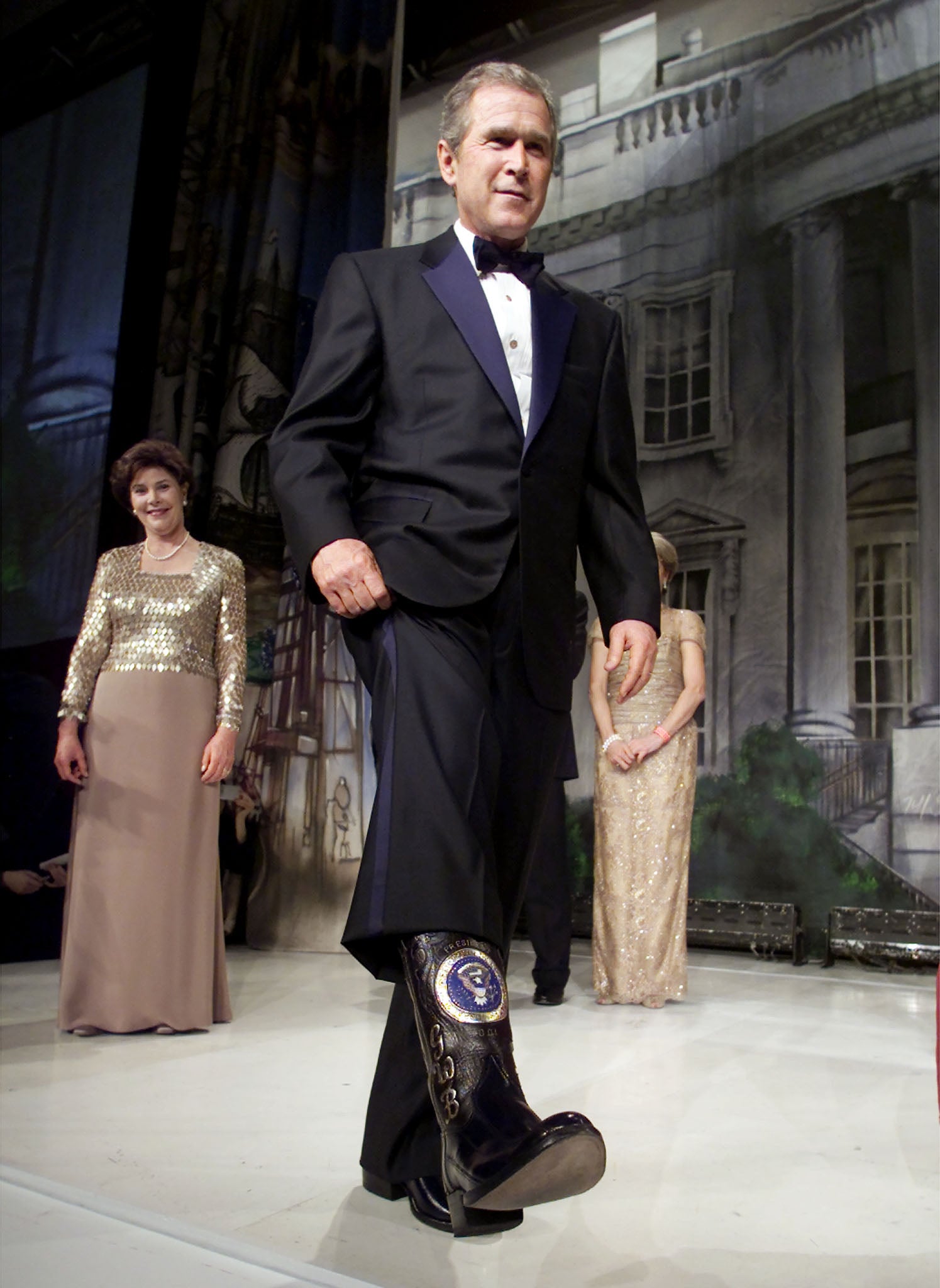Madeleine Albright’s DNC pins reveal how politicians hide their secret opinions in their accessories
Madeleine Albright deserves a round of applause for her restraint while appearing on stage at the Democratic National Convention in Philadelphia earlier this week. But not for the reasons you would think—the former US secretary of state’s self-control was sartorial.


Madeleine Albright deserves a round of applause for her restraint while appearing on stage at the Democratic National Convention in Philadelphia earlier this week. But not for the reasons you would think—the former US secretary of state’s self-control was sartorial.
Albright is famous for her pointed use of pins. Throughout her diplomatic career she was the master of using her collection of brooches as a weapon. Before a meeting with Iraqi officials she wore a snake pin. With Yasser Arafat, it was a bee.
So her choice on Tuesday night (July 26)—an American eagle pin that sparkled its way into millions of homes watching on television—was patriotic and full of hope, a thematic continuation of the optimistic, anti-inflammatory DNC. (If the Democrats had taken the same doomsday approach seen at the Republican National Convention the week before, you can only guess what motif she could have worn to send a message to Donald Trump.)
Last night (July 28), Albright returned to the DNC to watch Hillary officially accept the Democratic presidential nomination, this time wearing another type of pin entirely—a glass-ceiling smasher.
The politics of fashion have always been a high-wire act. A politician’s style cannot offend or shock. Anyone who seems too interested in how he or she looks will be perceived as superficial. You need to simultaneously stand out from the crowd while also appearing to be part of it as the relatable every(wo)man. And public backlash for wearing clothes deemed outrageous, overly fashion-forward or elitist can be swift—the internet is a merciless judge.
And so politicians—with advisors hovering nearby, clutching poll numbers—self censor and stick to the trusted uniform of blue suits and red ties, tailored jackets and pearls, and, in Democratic presidential nominee Hillary Clinton’s case, a rainbow wardrobe of pantsuits.
So how should a politician assert their individuality without alienating their constituents and peers across the political and global divide?
The answer: Accessories.
Shoes, socks, ties, boots, handbags, and jewelry—these are the permitted indulgences in a politician’s wardrobe. They allow them to telegraph their personal style or promote a message without pushing all the buttons. Accessories speak for the wearer, but typically they don’t shout.
Another recent example of this phenomena has been new British prime minister Theresa May’s buzzworthy collection of shoes. For a politician derided as being “difficult” and “boring,” May’s penchant for look-at-me footwear—leopard-print kitten heels in particular—are a revelation. On one level, it’s smart stagecraft. In a sea of safe dressing, you will always notice her. (Or, at the very least, her shoes.)

But on another level, May’s accessories seem to serve a different purpose. Those leopard heels don’t just signal an admitted love of fashion—they also hint at a private persona lurking beneath the supposedly dull version, one that is daring and playful (critics be damned). Some have suggested she is the Iron Lady 2.0, but through her choice of flashy heels, she assures voters that will never be the case.
But before there was May, there was Albright. The former US ambassador to the UN says she started using accessories as a statement after Saddam Hussein’s regime called her an “an unparalleled serpent.” Later, when meeting with Iraqi officials, Albright donned a snake pin as a tart comeback. “Before long, and without intending it, I found that jewelry had become part of my personal diplomatic arsenal,” she writes in her book Read My Pins: Stories From a Diplomat’s Jewel Box. From then on, every variation of pin from eagles to doves, angels to zebras became integral to her look. She even learned that Russian president Vladimir Putin would check to see what brooch she was wearing to anticipate her strategy pre-meeting.

And Albright is not alone: Oregon congressman Earl Blumenauer is also a pin aficionado, though his agenda is devotedly green. Founder of the Congressional Bike Caucus, he favors bike pins on his lapel to promote riding over driving.
For other politicians, ties are the accessory of choice. Republican presidential nominee Donald Trump has been ticketed by the fashion police for wearing his ties too long, while Florida Congressman Alan Grayson uses his ties to needle opponents. Once he wore one emblazoned with monopoly money while criticizing the Federal Reserve Board. He also wore a peace-sign tie while attending a briefing on Syria.

And what to make of former US president George H.W. Bush’s passion for the humble sock? At the April 2013 dedication of the George W. Bush library, he was photographed wearing pink socks; for his 89th birthday he was clad in a Superman pair.
“I’m a self-proclaimed sock man. The louder, the brighter, the crazier the pattern—the better!” he wrote in 2014 for a Republican National Committee fundraising appeal. This same event included the opportunity to purchase limited edition striped socks, complete with his signature.

Would he have declared himself a wild and crazy sock guy during his presidency? Doubtful. But now he asks the world to view him as he clearly sees himself: as an ex-president who also has a wild streak.
Beyond the ubiquitous flag pins, ties, and socks, male US politicians have found alternate statement accessories—including cowboy boots. In US politics, cowboy boots are the best non-verbal branding there is: Shorthand for the independent, fearless, gun slinging cowboy, slip on a pair and you promise voters that you embody those values. They are beloved by presidents, including Reagan, Clinton, and both Bushes. George W. even wore cowboy boots with the presidential seal under his suit to an inaugural gala.

And the boot brigade just keeps coming. Unsuccessful presidential hopefuls Rand Paul and Mike Huckabee are fans, and Ted Cruz calls his favorite black ostrich skin pair his “argument boots,” as he wore them while arguing cases as Texas solicitor general.
There’s no doubt that for politicians, accessories are the quiet workhorse of a career—and a wardrobe. Albright’s eagle pin proved it the other night. The good news is the election isn’t until November, so Albright still has time to dig through her jewel box, put on a pin, and let it add to the conversation.